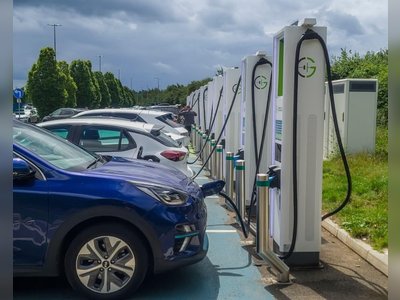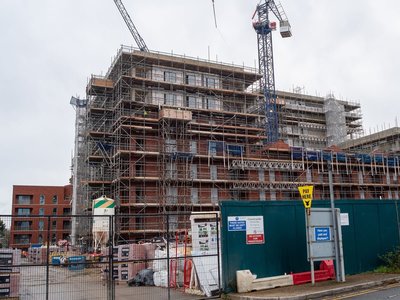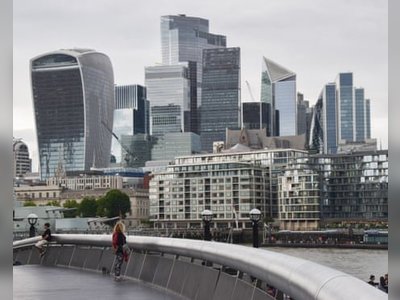
Lloyds predicts UK house prices will fall 8% next year
The UK's biggest mortgage lender, which runs the Halifax brand, gave a gloomy outlook for the UK economy.
It has set aside £668m to cover bad debts as rising interest rates make loans and mortgages less affordable.
The banking group announced pre-tax profits of £1.5bn in the third quarter of the year.
That was a 25% drop on the same period last year.
Banks typically make more money when interest rates rise as the gap between what they pay savers and what they charge borrowers widens, but the rapid increase in borrowing costs seen in the last year has made Lloyds gloomier about the overall economic outlook for the UK.
However, it said most of its mortgage customers would still be able to withstand cost-of-living pressures.
"So far at least, our customers are proving to be resilient and adapting well to the cost-of-living increases that we have seen," said the bank's chief financial officer, William Chalmers.
"We are deliberately ensuring that we lend to customers who are best placed to withstand potential future stresses on the macro level and in their own personal circumstances."

Customers facing arrears, defaults and write-offs remained low and below pre-pandemic levels, the bank said.
Mr Chalmers added that Lloyds' lending was skewed towards "slightly better off" customers to ensure they could pay back their loans if conditions got tougher.
The Bank of England's benchmark interest rate is 2.25%, and Lloyds warned that this could peak at 4% in 2024 before falling back.
Mr Chalmers admitted that this higher interest rate environment could lead to a slowdown in the housing market in the years ahead.
An 8% drop in house prices, if it happens, risks putting some recent buyers into negative equity, especially if prices fail to recover for some time.
However, such a fall would not actually completely cancel out the increase in house prices in the last year. The most recent data from the Office for National Statistics shows that the price of the average UK home increased by 13.6% in the year to August to £296,000.










